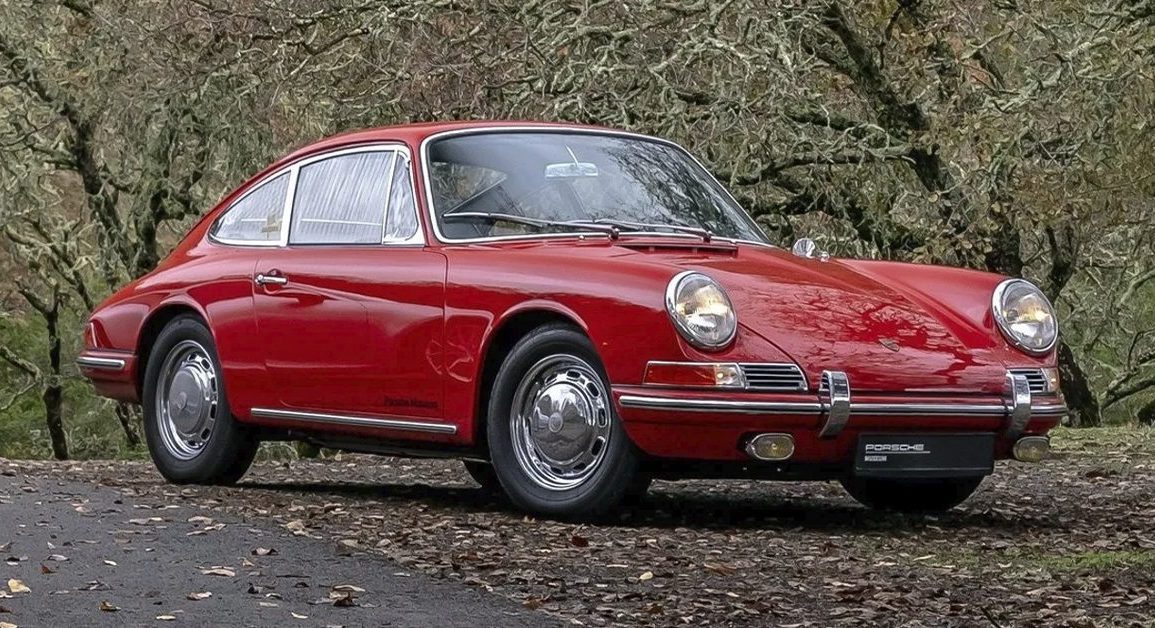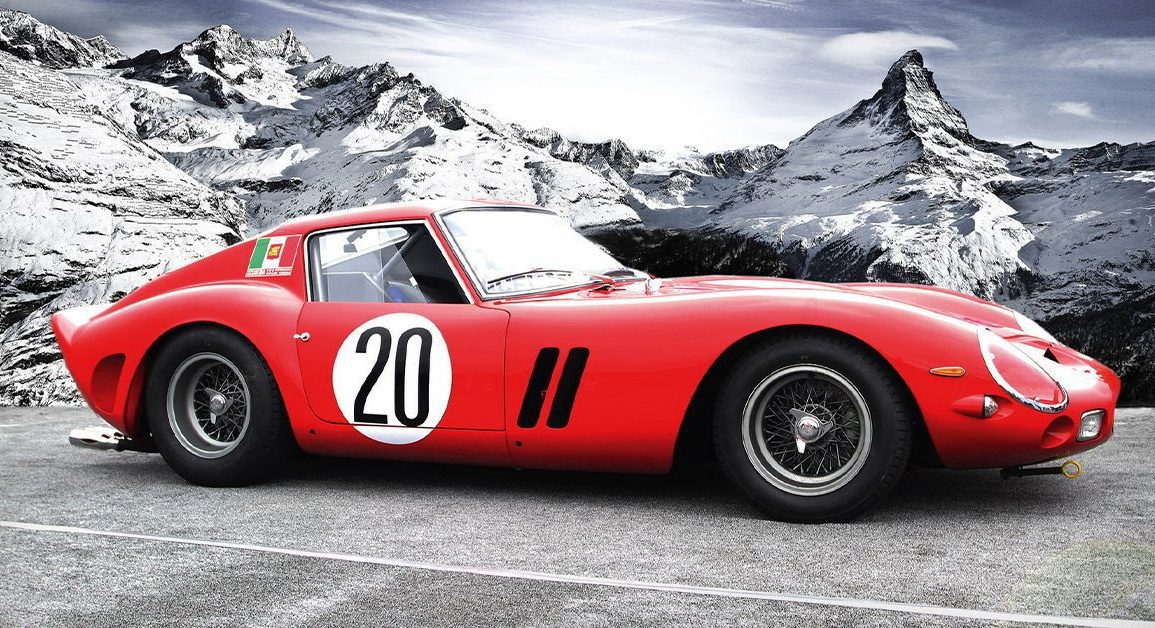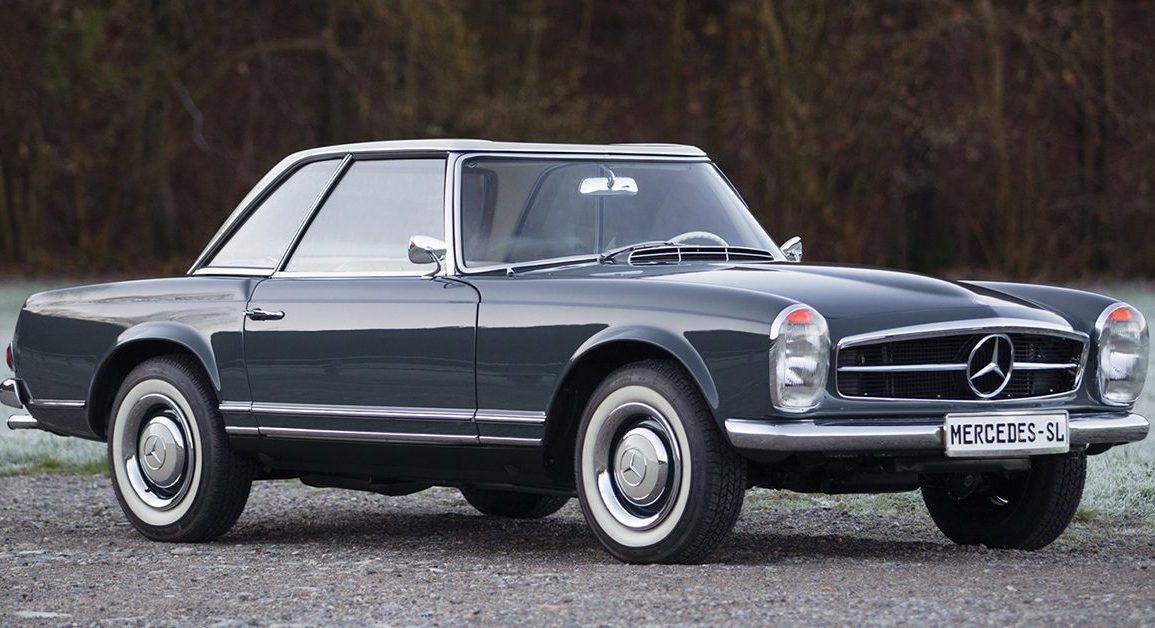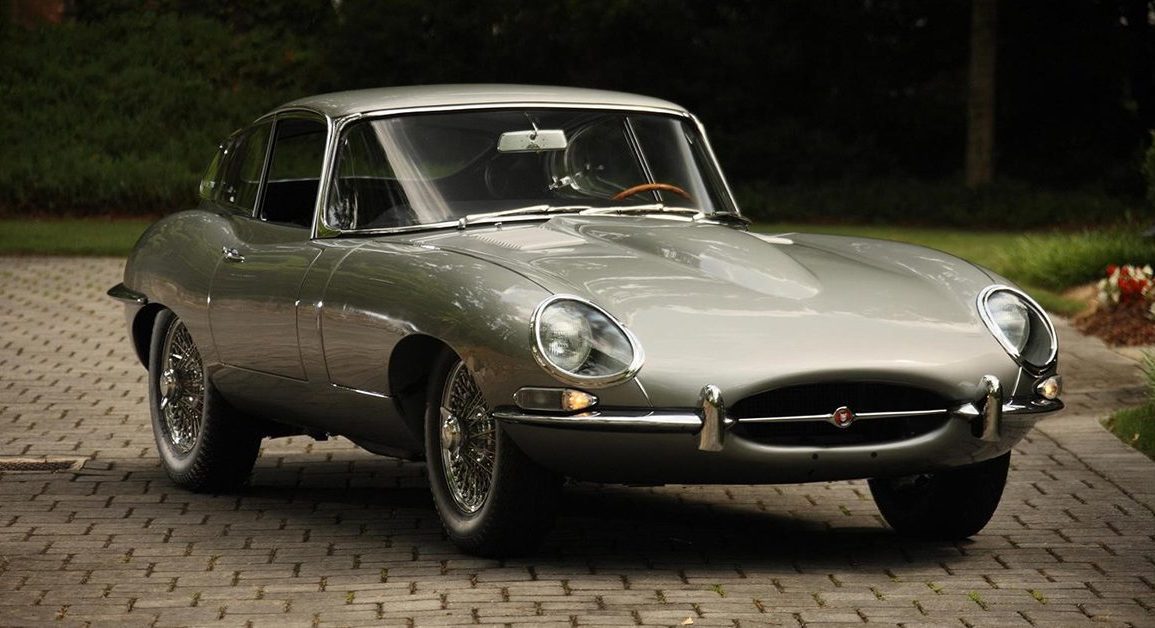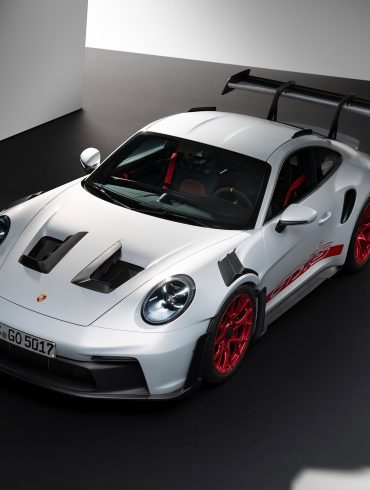Most Beautiful Cars of the 1960s
Updated September 2023 by Eduardo Zepeda
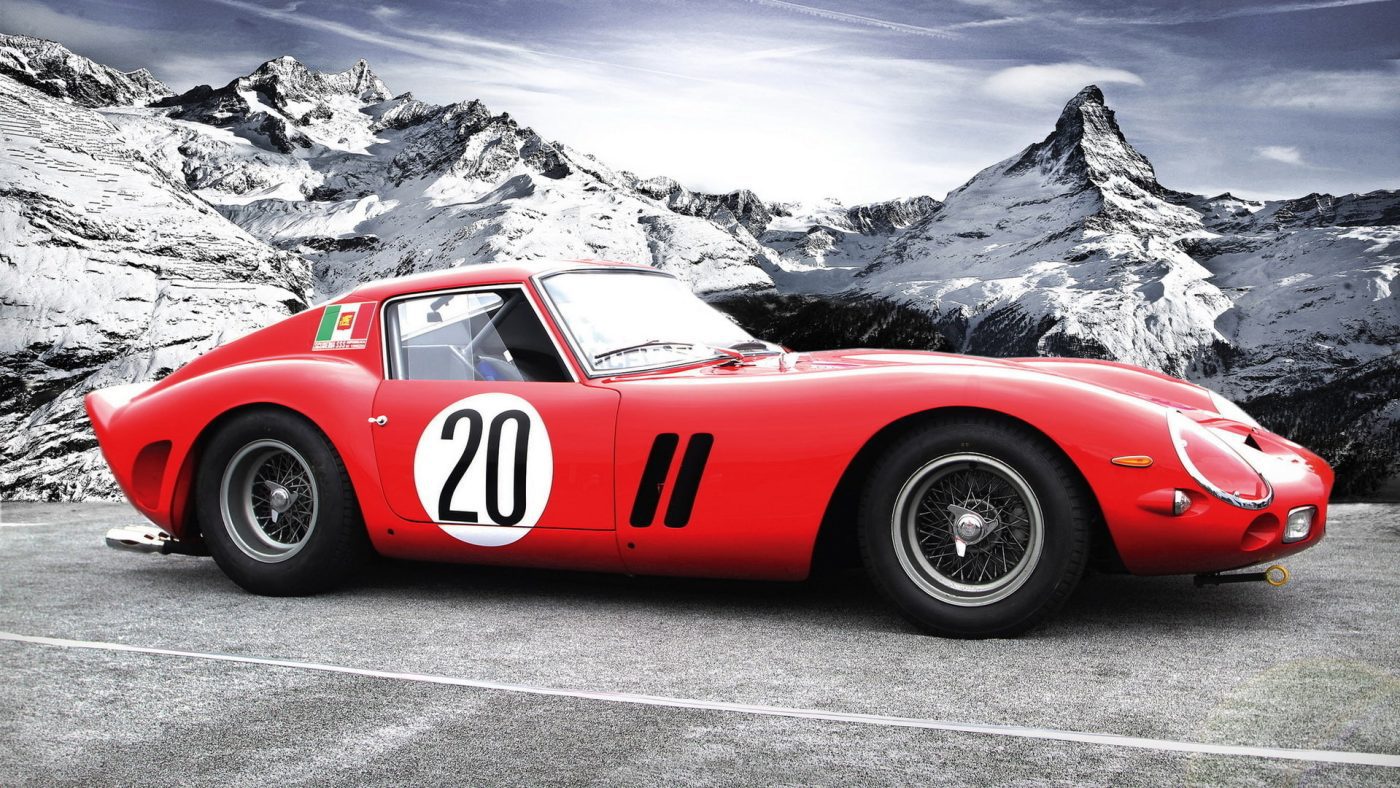
Sleek and streamlined shapes, tailfins, convertibles, and customization packages dictated the style of 1960s cars
About Our Selections
The 1960s marked a shift towards a more refined and muscular aesthetic in car design. While still influenced by the Jet Age, the flamboyant tailfins of the previous decade began to recede, replaced by cleaner lines and a focus on performance-inspired cues. Long hoods and short decklids emphasized powerful proportions, while sculpted bodywork and Coke-bottle curves hinted at the growing emphasis on aerodynamics. This era saw the rise of the "muscle car" with its aggressive stance and powerful engines, as well as the emergence of European sports cars with their elegant and minimalist designs. It was a decade of contrasts, where classic elegance met youthful rebellion, resulting in some of the most iconic and enduring car designs of all time.
The 1960s marked a period of transformation and cultural upheaval. It was a time when established societal norms faced challenges, music underwent an evolution, and fashion took on a new form. However, amidst these changes, there was another industry experiencing groundbreaking innovation and stylish developments: automobiles.
The 1960s witnessed the emergence of some of history's most visually captivating cars. This decade served as an age for aesthetics, showcasing sleek and streamlined designs alongside powerful engines that exuded dominance. In this blog post, we will embark on a journey to delve into the visually appealing cars from the 1960s and explore what made this era truly distinctive within automotive history.
1963 Chevrolet Corvette C2
America's sports car
Why We Picked It:
The Chevrolet Corvette C2's radical aesthetic was more than just a step away from its predecessor; it was also incredibly innovative, more sporty, and performance-driven.
Its sharp front had a retractable cover to hide the double circular optics, a scheme that was maintained until the arrival of the sixth generation of the model when the retractable headlights were eliminated.
Its lines were primarily based on those designed for the Q-Corvette and later adapted to the Sting Ray concept, also based on the shape of the manta fish.
The Corvette had a horizontal line that ran the entire length of the vehicle's side, drawing inspiration from Italian designers like Pininfarina. Some styling decisions were made after wind tunnel studies, marking a GM project's first use of this aerodynamic study tool.
On a mechanical level, the C2 Corvette inherited a 5.4-liter small-block 327 V8 fed by a carburetor or fuel injection and paired with a four-speed manual transmission.
Specifications:
Price: $100,000-$2,500,000
Engine: 5.4L V8
Power: 250 hp
Torque: 350 lb-ft
Transmission: 4-Speed Manual
Curb Weight: 3,037 lbs
Highlights:
The Corvette C2 was one of the first models in history to do away with the flat, vertical front end, which had characterized the design of all automobiles since the turn of the century.
The C2's silhouette was based on the two models mentioned above, and Larry Shinoda created it under the direction of Bill Mitchell.
Learn More:
1963 Porsche 901 (911)
The first 911
Why We Picked It:
The Porsche 901, the replacement for the Porsche 356, debuted in September 1963. However, since Peugeot had patented using three-digit numerals with a 0 in the middle, Porsche had to rename the car. The Porsche 901 is now known as the 911.
As the United States national emergency number, this string of digits was already widely known in this crucial market for Porsche. Before the model was rebranded, Porsche built 82 901s.
The 911, which up until that moment had only been produced as a Coupé, featured a new 2.0-liter six-cylinder boxer engine with the ability to make 130 horsepower and a self-supporting body.
Starting with the 1967 model year, Porsche offered the 911 as a "safety cabriolet" (Targa) with a removable folding roof and a permanently installed roll bar. The 57-mm wheelbase expansion that went into effect in September 1968 made for a more relaxed ride and steadier handling.
Specifications:
Price: $4,000,000-$5,000,000
Engine: 2.0L Flat-Six
Power: 130 hp
Torque: 119 lb-ft
Transmission: 5-Speed Manual
Curb Weight: 2,381 lbs
Highlights:
Ferdinand Alexander Porsche, also known as Butzi Porsche, created the first Porsche 911 (the 901).
The first Porsche 911 was a revolutionary car introduced in 1963. It was the first car to combine the performance and handling of a sports car with the comfort and refinement of a GT car. The 911's styling was also groundbreaking, inspiring many other car designers.
Learn More:
1967 Chevrolet Camaro SS
A stylish pony car
Why We Picked It:
The iconic 1967 Chevrolet Camaro SS was characterized by a bold and powerful front-end design. Massive quad headlights in a chrome bezel flank a horizontally split grille with an "SS" emblem in the middle. The front bumper's gentle curve flowed into the car's profile.
The Camaro SS epitomizes muscle car style with its low profile and broad shoulders. The car has a large front grille and a small trunk, while the car's roof is gently sloped down to the trunk.
The SS Camaro's aerodynamics and visual appeal were both enhanced by this design. The bold, instantly recognized nighttime appearance was achieved by skillfully integrating the two horizontal tail lights on either side into the rear body panel.
Two different V8 engines producing 295 and 330 horsepower were available for the renowned 1967 Camaro with the SS package.
Specifications:
Price: $30,000-$200,000
Engine: 5.7L V8
Power: 295 hp
Torque: 380 lb-ft
Transmission: 4-Speed Manual
Curb Weight: 3,500 lbs
Highlights:
The Camaro was designed to directly compete with the Ford Mustang, which was already very popular. The Camaro SS had to be stylish, powerful, and affordable, succeeding in all those areas.
The Camaro was a stylish, powerful and affordable pony car that quickly became a favorite among muscle car enthusiasts.
Learn More:
1962 Ferrari 250 GTO
THE one
Why We Picked It:
Regarding production road racers, the Ferrari 250 GTO is it. Its classic proportions and distinctive profile make it an instantly recognizable car, not to mention its unrivaled racing success. Also, the 250 GTO is the most sought-after Ferrari model due to its groundbreaking design, extensive track record in road racing, and the fact that only 36 Ferrari 250 GTOs were ever produced.
The Ferrari 250 GTO was capable of a staggering 170 mph because of its aerodynamic body and powerful hand-built V12 engine. The GTO's exterior was a masterful creation by Giotto Bizzarrini, who relied heavily on wind tunnel testing.
The Ferrari 250 GTO was the first automobile to include a body-integrated rear spoiler. Its high tail and quiet operation have made it an instant classic in motorsports.
It has since been heralded as the vehicle with the most eye-catching and original aesthetic. For some, The Ferrari 250 GTO is the most beautiful vehicle ever.
Specifications:
Price: $30,000,000-$70,000,000
Engine: 3.0L V12
Power: 302 hp
Torque: 216 lb-ft
Transmission: 5-Speed Manual
Curb Weight: 2,229 lbs
Highlights:
The Sergio Scaglietti-created car's design, which drew inspiration from the earlier Ferrari 250 GT SWB, is a work of art. Its elegant yet aggressive lines, distinctive front grille, and curvaceous body create a timeless and captivating aesthetic.
Few cars can match the Ferrari 250 GTO in rarity, racing achievements, captivating design, exceptional performance, and historical importance.
Learn More:
1969 Datsun 240 Z
Japan's best export
Why We Picked It:
Japan's most significant automobile ever is the Datsun 240Z. It altered the landscape of the sports car market and made its creator a leading automaker. Everyone lusted after one because of its deep-chested straight-six, energetic handling, and affordable price.
The styling, which Yoshihiko Matsuo accomplished almost perfectly, is still attractive today. American shoppers were content to spend more at their neighborhood Datsun dealer or wait in line for one because a Japanese sports car had its own character and charm for the first time.
It's all sports vehicles inside as well. The upright wheel and reclining driving position, which places you virtually atop the back axle, are standard, but the dashboard differs significantly from a classic British sports car. The bank of instruments set deeper into the Z's one-piece dash is exquisitely crafted and is laid out just as it should be.
Specifications:
Price: $20,000-$35,000
Engine: 2.4L Inline-Six
Power: 160 hp
Torque: 145 lb-ft
Transmission: 5-Speed Manual
Curb Weight: 2,450 lbs
Highlights:
The Datsun 240z was one of the first Japanese sports cars to be imported to the United States, and it helped to change the perception of Japanese cars from being cheap and unreliable to being stylish and performance-oriented.
The 240Z was a huge success and helped establish Nissan as a major player in the sports car market. It is still considered one of the most essential Japanese sports cars ever made.
Learn More:
1963 Mercedes-Benz 230 SL
Timeless automotive beauty
Why We Picked It:
The Mercedes-Benz 230 SL has a tasteful and sophisticated design without being excessive. It included everything one would want in a sports car: a straight-six engine, fuel injection, two seats, four-wheel independent suspension, and a retractable hardtop, all wrapped in one of the most beautiful, sleekest car designs ever.
French automotive designer Paul Bracq played a significant role in shaping the car's aesthetic and the distinctive removable hardtop, which earned the car its "pagoda" nickname. Friedrich Geiger, a German designer, contributed to the overall design and engineering aspects of the 230 SL.
The removable hardtop featured a concave shape, which is unusual because most roofs are convex when viewed from the front or back. The idea was to increase the car's structural stiffness to safeguard its occupants in a rollover crash and improve its aesthetics by allowing for larger windows and a more open feel.
Specifications:
Price: $60,000-$80,000
Engine: 2.3L Inline-Six
Power: 150 hp
Torque: 144 lb-ft
Transmission: 4-Speed Manual
Curb Weight: 2,855 lbs
Highlights:
Design-wise, the 230SL was far ahead of its time, and the driving experience was startlingly cutting-edge.
It starts and idles like a new car thanks to multi-point fuel injection instead of the typical carbureted engines of the time.
Learn More:
1965 Jaguar E-Type
One of the most beautiful cars ever
Why We Picked It:
The 1965 Jaguar E Type is often regarded as one of the most captivating cars ever created, showcasing its status as an iconic masterpiece in automotive design. Malcolm Sayer, a Jaguar’s aerodynamicist, crafted this incredible piece of art. It emanates a timeless charm.
Underneath its exterior, the E-Type boasted a 4.2-liter inline-six engine that generated 265 horsepower and enabled it to achieve up to 150 mph speeds.
Its curved body, elongated hood, and distinctive oval grille contributed to its profile, seamlessly combining beauty and functionality.
This vehicle exhibited agility and handling capabilities. However, it was not solely its appearance but also its race-inspired engineering features, such as independent rear suspension, disc brakes, and a monocoque chassis.
Specifications:
Price: $50,000-$100,000
Engine: 4.2L Inline-Six
Power: 265 hp
Torque: 283 lb-ft
Transmission: 4-Speed Manual
Curb Weight: 2,465 lbs
Highlights:
Malcolm Sayer, who also created the Jaguar D-Type racing car, was responsible for the E-Type's design.
The Italian sports cars of the 1950s served as Sayer's design inspiration for the E-Type, but he also added some contemporary features, like the wraparound windshield.
Learn More:
1966 Ford Mustang Shelby GT350
Fast, rare, legendary
Why We Picked It:
The 1966 Ford Mustang Shelby GT350 is an American automotive legend whose reputation is well-deserved. Designed by the iconic Carroll Shelby, this high-performance variant of the classic Mustang took the automotive world by storm.
Under the hood, it packed a 4.7-liter V8 engine pumping out 306 horsepower, mated to a 4-speed manual transmission. The GT350 was built for the racetrack, with upgrades like heavy-duty suspension, larger brakes, and distinctive GT350 bodywork.
What truly set the GT350 apart was its aggressive and purposeful design. Sporting racing stripes, a ventilated hood, and a muscular stance radiated performance from every angle.
The interior was stripped-down and driver-focused, emphasizing the car's racing pedigree. The 1966 Ford Mustang Shelby GT350 remains an enduring symbol of American muscle car excellence, embodying style and substance in automotive history.
Specifications:
Price: $200,000-$500,000
Engine: 4.7L V8
Power: 306 hp
Torque: 329 lb-ft
Transmission: 4-Speed Manual / 3-Speed Auto
Curb Weight: 2,789 lbs
Highlights:
The GT350 was available in both fastback and convertible body styles. It came standard with a black exterior and white racing stripes. The interior was also black, with bucket seats and a floor shifter.
The Cobra inspired the GT350's design, featuring several unique features, such as a wider track, a stiffer suspension, and a more aggressive body kit. The car also had a unique interior, with bucket seats and a floor shifter.
Learn More:
1963 Alpine A110
The rally master
Why We Picked It:
Giovanni Michelotti, an Italian designer who worked on creating various models for Austin, BMW, DAF, Ford, Lancia, Maserati, and Triumph, presented his creation for Alpine at the 1962 Paris Salon under the name A110. The A110 was a unique two-seater that stood out for its aesthetics and extraordinary dynamic qualities, allowing it to complete a successful career in rallies.
The A110 took the Renault 8 as a doner for many parts. The project was carried out by Micheletti, who conceived a sharp body mounted on a tubular chassis with a longitudinal rear engine and equally rear-wheel drive.
The lightness of the A110 was remarkable, not only for its contained dimensions but also for the fiberglass body. The A110 did not exceed 750 kg in weight, giving it an excellent power-to-weight ratio and some outstanding dynamic qualities.
The Alpine A110 was a dominant force in international rallying during the 1960s and 1970s. It won numerous rally championships, including the inaugural World Rally Championship (WRC) 1973.
Specifications:
Price: $110,000–$130,000
Engine: 1.6L Inline-Four
Power: 138 hp
Torque: 90 lb-ft
Transmission: 5-Speed Manual
Curb Weight: 1,368 lbs
Highlights:
The Alpine A110's lightweight construction and agile handling made it exceptionally competitive on tarmac and gravel rally stages.
The A110 featured a lightweight fiberglass body mounted on a steel backbone chassis. This innovative design contributed to the car's exceptional handling and agility.
Learn More:
1966 Ford GT40
A great among the greats
Why We Picked It:
The Ford GT40 is closely associated with one of the greatest moments in motorsport history, as it was specifically designed to outperform Ferrari in the renowned 24 Hours of Le Mans race. Ford's drive to win and end Ferraris's dominance during the 1960s resulted in the creation of the GT40.
The GT40 showcased cutting-edge engineering, incorporating a chassis streamlined bodywork and a mid-engine layout. Its aerodynamics and handling capabilities made it a formidable competitor on the racetrack.
It offered engine options, including a 4.7 liter V8 and a 7.0 liter V8, which delivered power outputs with specific models surpassing 500 horsepower. The remarkable performance of these engines played a role in its triumphs in endurance racing.
With its purposeful design, the GT40 boasted a slung profile, a distinctive front end, and gullwing doors, enhancing its aerodynamic efficiency and making it instantly recognizable.
Specifications:
Price: $3,700,000-$4,300,000
Engine: 4.7L V8
Power: 335 hp
Torque: 336 lb-ft
Transmission: 5-Speed Manual
Curb Weight: 2,381 lbs
Highlights:
A few GT40s were manufactured, making them highly desirable for collectors. Their scarcity and historical importance have transformed them into cars.
The GT40's triumphs and lasting impact in motorsport have left a lasting impression on car enthusiasts, solidifying its status as a representation of motorsport excellence.



